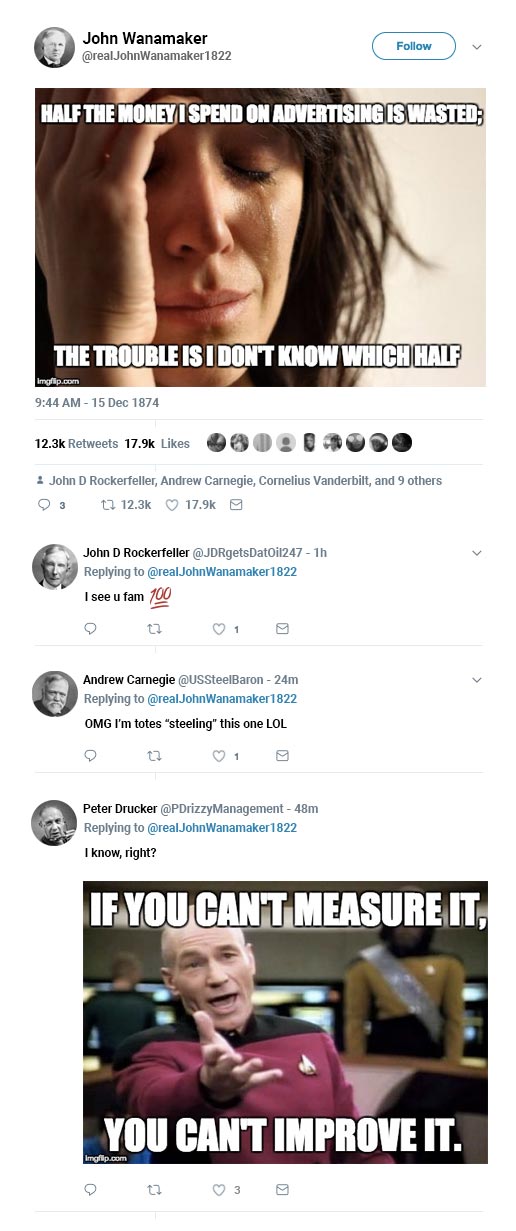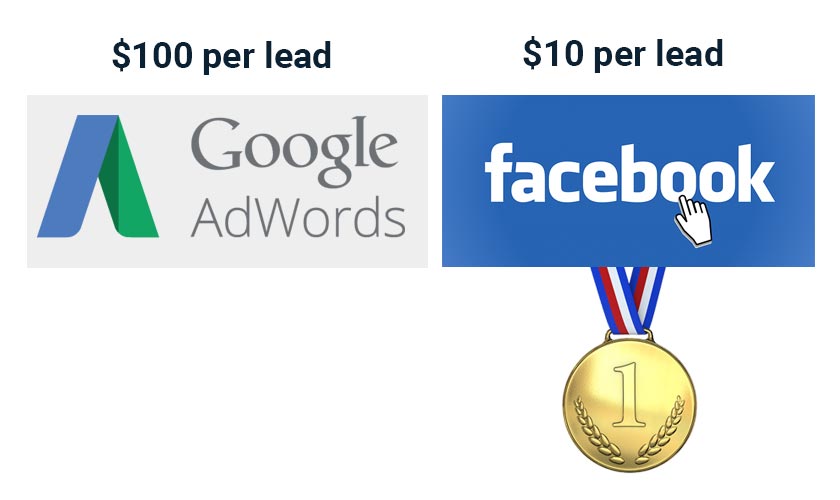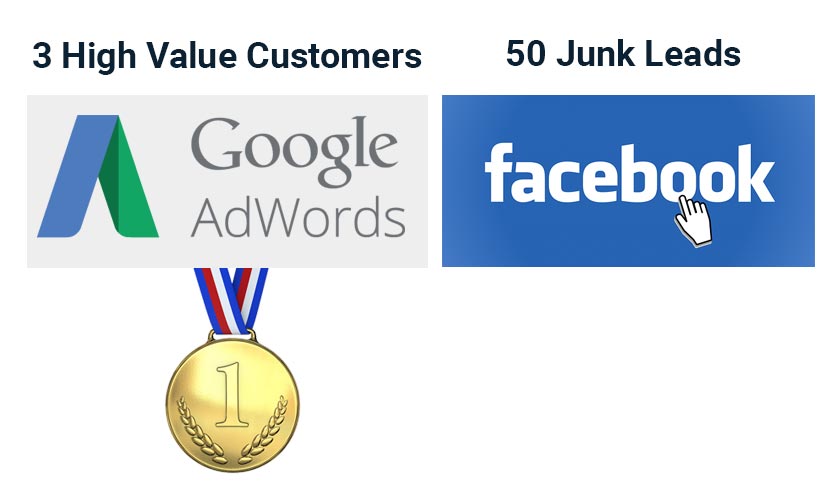Half the money I spend on advertising is wasted; the trouble is I don’t know which half.
John Wanamaker
If you can’t measure it, you can’t manage it.
Peter Drucker

Closing the Loop
So, digital marketing is great. We’ve established that. Let’s say you hire an agency like us to do your digital marketing. Wonderful, that’s a step in the right direction, but even when your website and paid search campaigns are all decked out with the proper analytics and conversion tracking tags, we’re still missing vital information. Where do we need to get this missing information? From you! We set up analytics and conversion tracking to measure key performance indicators, or KPI’s. There are different kinds of KPI’s, but for the sake of keeping it simple, we are mostly talking about form submissions and phone calls. These are measurable events that serve to signify that a visitor has converted from an anonymous visitor to a lead. Sweet! More leads are what you really want, right? Well… almost. Leads are awesome and we love them, but they don’t directly put money in your bank account and keep the doors to your business open. Only paying customers do that.Tell Us What Becomes of Your Leads
Unless you tell us, we don’t know what becomes of your leads. We can see that someone filled out a quote request form, but we don’t know if they decided to do business with you. We can see that a phone call happened, but we can’t listen in. The problem is, our stats might not tell us the real story. Let’s say you threw $500 at a social media campaign and $500 at a Google AdWords campaign. The social media campaign got you 50 leads at a cost of $10 per lead. The AdWords search campaign got you five leads at $100 per lead. Without knowing what became of those leads, it would appear that the social media campaign was a resounding success and AdWords was a flop.

How Do I Know Where My Actual Paying Customers Came From?
There are a few ways, and this first way is a top-secret technique that only a select few of the savviest marketers know. Technique #1 – Ask them. It’s not hard. You just have to make it a habit. It’s easy to make it a habit if you are convinced that this information is important. It’s not prying, no one is going to be mad at you for asking. To be clear, I’m not endorsing asking them via an extra field on your contact form. We always want to keep forms as short as possible. Ask them in conversation. Technique #2 – Using your CRM. CRM stands for customer relationship management. CRM software is widely used by most businesses to keep track of details about clients and to keep a log of client communications for easy reference. A good CRM can keep track of every interaction with your website, and it can also tell you where the visits originated from (organic search, PPC, Facebook, Twitter, etc.). With a good CRM, you can know that John Doe found you via Google AdWords after searching the keyword phrase “Best Kalamazoo Taxidermist” and they filled out a contact form on December 28th. What a beautiful bounty of useful info, but you’re not off the hook yet! When you fill John Doe’s order and charge him $1100, you need to enter that info into your CRM. When he comes back for another order the next year, enter that, and when he refers a friend, enter that. You and your marketer can now get a true picture of where your revenue is really coming from. Technique #3 – Using call tracking software. In case you and all your salespeople forgot to utilize technique #1, you can find out where your customers came from using call tracking software. Call tracking software works by using a dynamic phone number that switches in real time when a user visits your site. When John Doe comes to your site via AdWords and calls that dynamic number, the software can attribute that call to the correct source. There’s a goldmine of useful information when you can see all your calls in one central, easily searchable database. You can see who called, when they called, where they came from, and even listen to recordings of the calls. (Recording laws may vary by state.)Make it a Priority
Few win in business flying by the seat of their pants. You wouldn’t settle for murky information from your accountant, would you? No, you give them all your receipts so every last penny is accounted for. You can’t settle for murky information about your marketing either. Make it a priority to document what happens with your leads, and we’ll all enjoy the peace of mind that comes with knowing the real story of what is happening with your marketing dollars.Are you wondering which half of your advertising is working? Talk to a digital marketing expert today. Call TheeDigital at 919-341-8901 or schedule a consultation.
Tags: Digital Marketing





